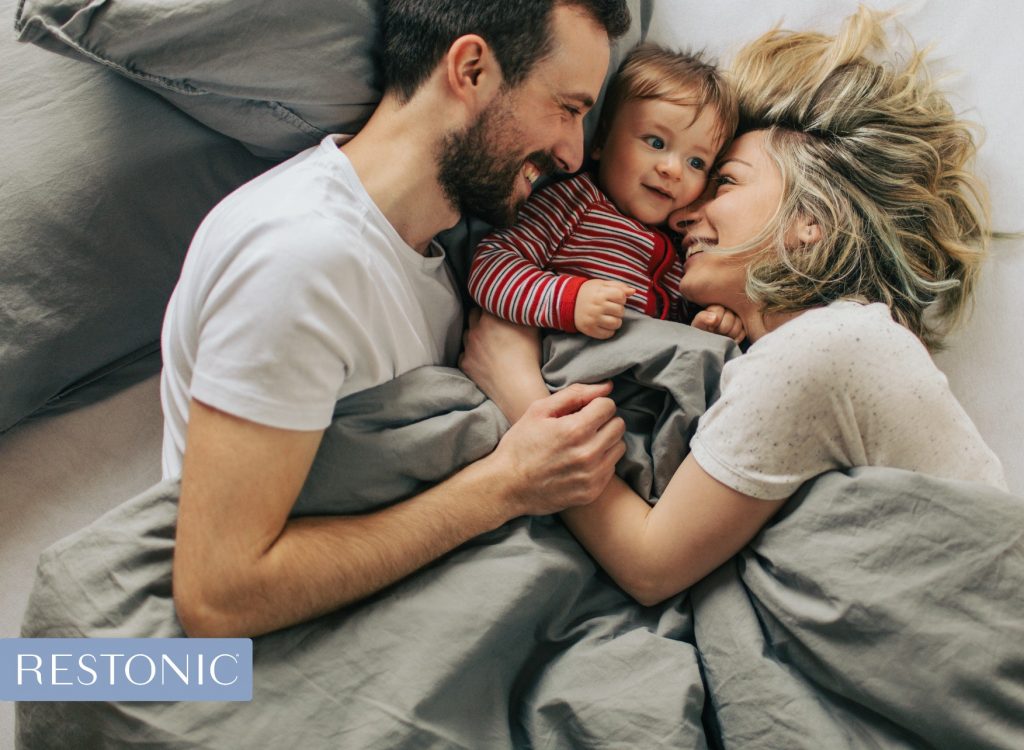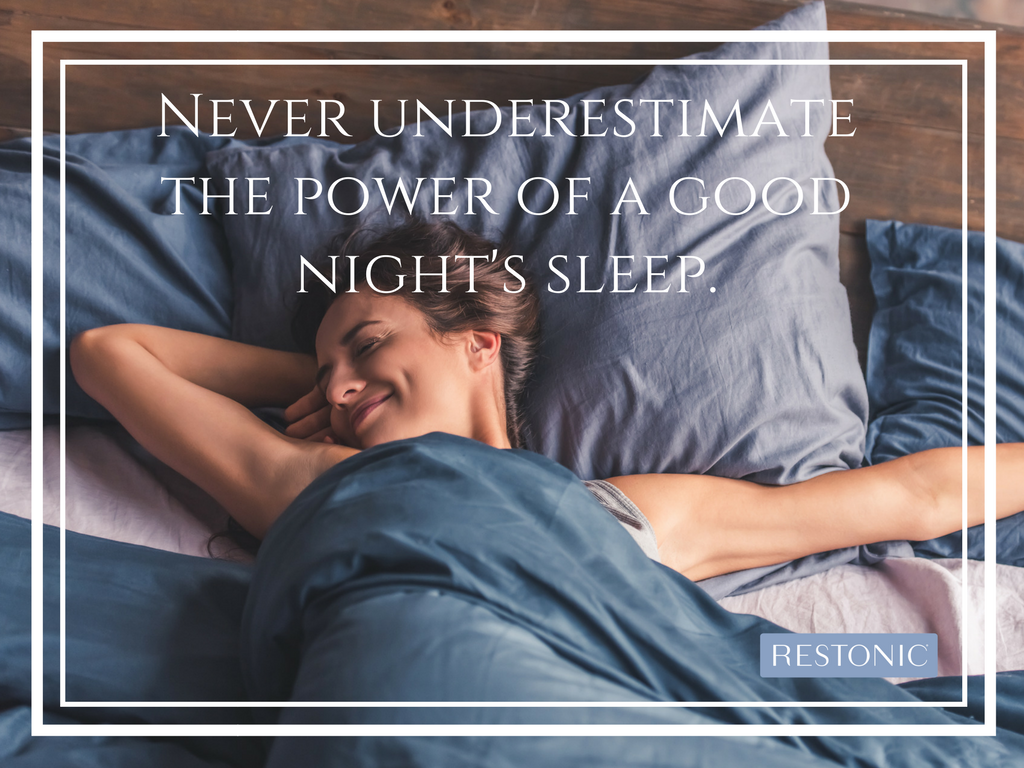 All you need to know about the latest sleep-inducing craze
All you need to know about the latest sleep-inducing craze
What’s a weighted blanket? It’s a quilted blanket with a fair bit of weight to them because they incorporate pellets, weighted disks or glass beads to add heft (usually about 15 pounds worth). The weight is designed to soothe sleepers using deep touch pressure (DTP) and compression therapy, which help promote relaxation and boosts the release of serotonin and dopamine, the feel-good hormones.
How do weighted blankets help you sleep?
“Weighted blankets feel good to most people because the pressure they provide is often quite calming (the way a hug or a massage can be),” says Dr. Lynelle Schneeberg, a clinical sleep psychologist, assistant clinical professor at Yale University and director of the behavioral sleep program at The Sleep Center at Connecticut Children’s Medical Center. “Some people find that they feel less restless in bed, too, when they use them.”
Dr. Temple Grandin, a renowned animal expert who has autism, was instrumental in their development after conducting research on the calming effects weighted blankets had on animals and humans alike. They are especially popular for use with children who have attention deficit disorder and autism. There has been a fair amount of research done about their effectiveness for these conditions and insomnia as well.
What the research says about weighted blankets
A 2015 Swedish study found that “a weighted blanket may aid in reducing insomnia through increased tactile and proprioceptive inputs, may provide an innovative, nonpharmacological approach and complementary tool to improve sleep quality.” Research from 2005 when weighted blankets were becoming more mainstream stated participants had a 63% reduction in anxiety with a 30-lb version and 78% said they preferred weighted blankets as a calming tool.
Anecdotal evidence echoes those findings. A reporter for NBC News wrote about her experience using one to calm her racing mind and found she was less restless and able to sleep through the night with a 15-pound version.
“They’re worth a try,” says Dr. Schneeberg, “however, they can become something that a person becomes dependent on (as a “sleep onset association” or “sleep crutch). Since they can be heavy and hot (not to mention difficult to pack!) this has the potential to become a problem if you travel.”
One option for weighted blanket users is to go the compression route, for a more portable option. She points out that there are some stretchy Lycra bed wraps that can provide a similar sensation without using weight. They’re light, cool and easy to pack. They were developed for kids on the autism spectrum, but an adult could use them too.
How to buy a weighted blanket
- If you’re unsure about shelling out at least $200 for one, ask around and see if you can borrow one for a night.
- Experts say you should choose a blanket weight that’s about 10% of your own body weight.
- If you have sleep apnea or snore robustly, having something heavy on your chest might not be conducive to good sleep.
- To be able to wash your blanket, choose one that has removable weights.
- Check out well-known brands such as Rocabi, SensaCalm, and Gravity Blankets.
- Before you buy (especially online), check out the company’s return policy.
How to sleep better with or without a weighted blanket
Dr. Schneeberg also points to another reason why so many people have insomnia. “The main reason is that they may have developed a bad habit of spending too much in bed, and more specifically, that they lie awake in bed in the dark “trying to sleep” for far too long (hours…in some cases).”
She compares making yourself go to sleep to trying to get a butterfly to land on you. It’s better if it just happens without working at it too hard. “Towards this goal, I recommend to my clients that they have a consistent, relaxing bedtime routine that concludes with them sitting up in bed doing something engaging and relaxing (reading, working a crossword puzzle, listening to an audio book or a podcast, and so on) until they are very drowsy.”
It’s only then should they lie down to go to sleep. If their minds perk right back up again, it’s time to sit up and read some more. “I’d also want them to spend less total time in bed until they’re sleeping better again. This is known as sleep restriction (or sleep scheduling or sleep compression) and is very helpful for re-associating one’s bed with sleep and relaxation only after a period of insomnia.
Weighted blanket or not, it’s good advice to respect our beds as a place for sleep. Keep gaming, social media and TV watching out of the bedroom for better sleep.
Rest well & wake up ready to go!
Better sleep gives rise to better mornings, bringing your goals into focus and dreams within reach. Hungry for more sleep info? Dig into these posts:
Eager for more sleep info you can really use?
Join our community
Facebook
and let's continue the conversation.
We'd love to hear what you have to say!
This blog does not provide medical advice. It is intended for general informational purposes only and does not address individual circumstances. It is not a substitute for professional medical advice, diagnosis or treatment and should not be relied on to make decisions about your health. Never ignore professional medical advice in seeking treatment because of something you have read on Restonic.com. If you think you may have a medical emergency, immediately call your doctor or dial 911.

